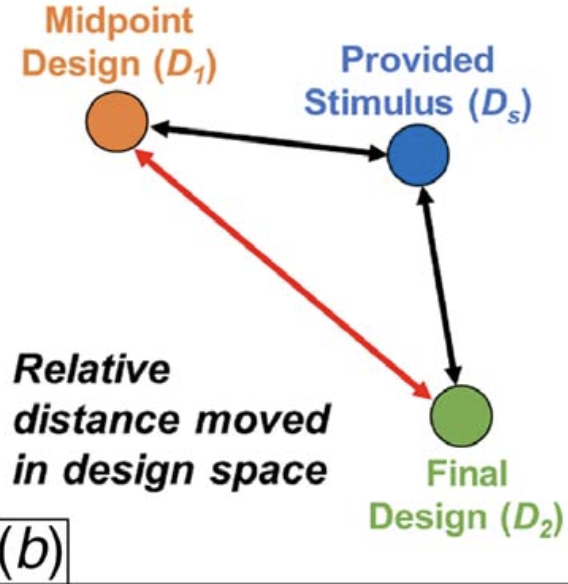Abstract
Design activity can be supported using inspirational stimuli (e.g., analogies, patents) by helping designers overcome impasses or in generating solutions with more positive characteristics during ideation. Design researchers typically generate inspirational stimuli a priori in order to investigate their impact. However, for a chosen stimulus to possess maximal utility, it should automatically reflect the current and ongoing progress of the designer. In this work, designers receive computationally selected inspirational stimuli midway through an ideation session in response to the contents of their current solution. Sourced from a broad database of related example solutions, the semantic similarity between the content of the current design and concepts within the database determines which potential stimulus is received. Designers receive a particular stimulus based on three experimental conditions: a semantically near stimulus, a semantically far stimulus, or no stimulus (control). Results indicate that adaptive inspirational stimuli can be determined using latent semantic analysis (LSA) and that semantic similarity measures are a promising approach for real-time monitoring of the design process. The ability to achieve differentiable near versus far stimuli was validated using both semantic cosine similarity values and participant self-response ratings. As a further contribution, this work also explores the impact of different types of adaptive inspirational stimuli on design outcomes using a newly introduced “design innovation” measure. The design innovation measure mathematically captures the overall goodness of a design concept by uniquely combining expert ratings across easier to evaluate subdimensions of feasibility, usefulness, and novelty. While results demonstrate that near inspirational stimuli increase the feasibility of design solutions, they also show the significant impact of the overall inspirational stimulus innovativeness on final design outcomes. In fact, participants are more likely to generate innovative final design solutions when given innovative inspirational stimuli, regardless of their experimental condition.
